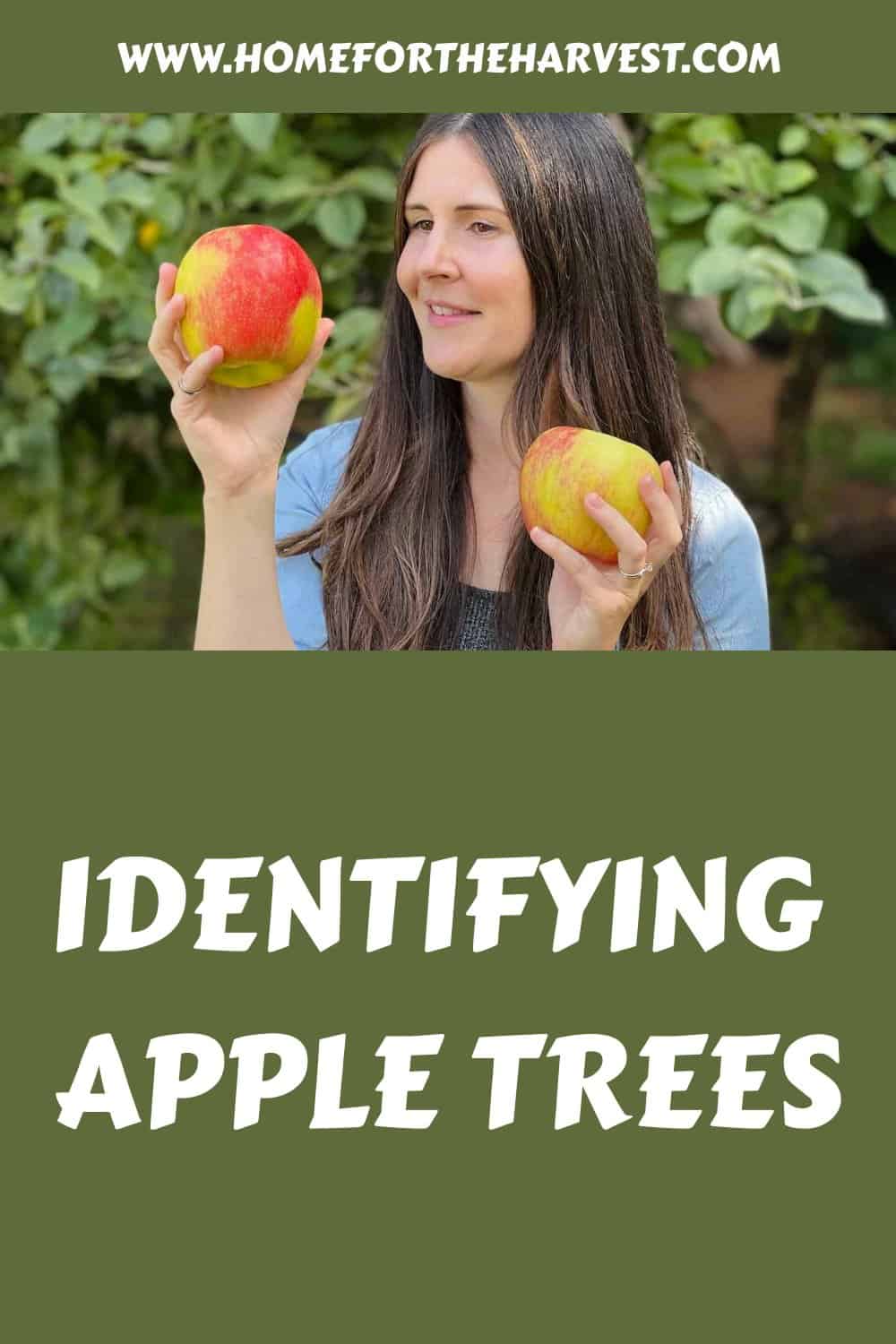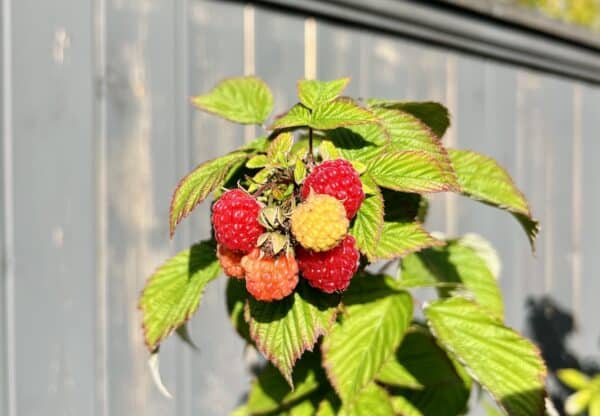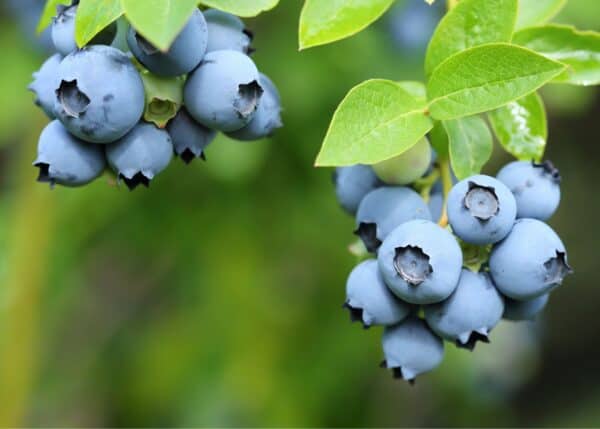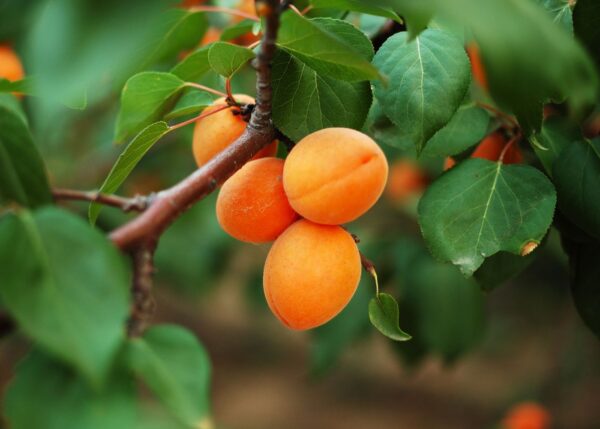Identifying apple trees starts by determining whether the tree is an apple tree (Malus domestica), some other species of Rosaceae, or a deciduous tree. Then you can examine the tree’s form, as well as the fruit, to identify characteristics such as size, shape, peel color, lenticels, and flavor. If you are still unsure, send a representative sample to an expert for identification or even for DNA fingerprinting.
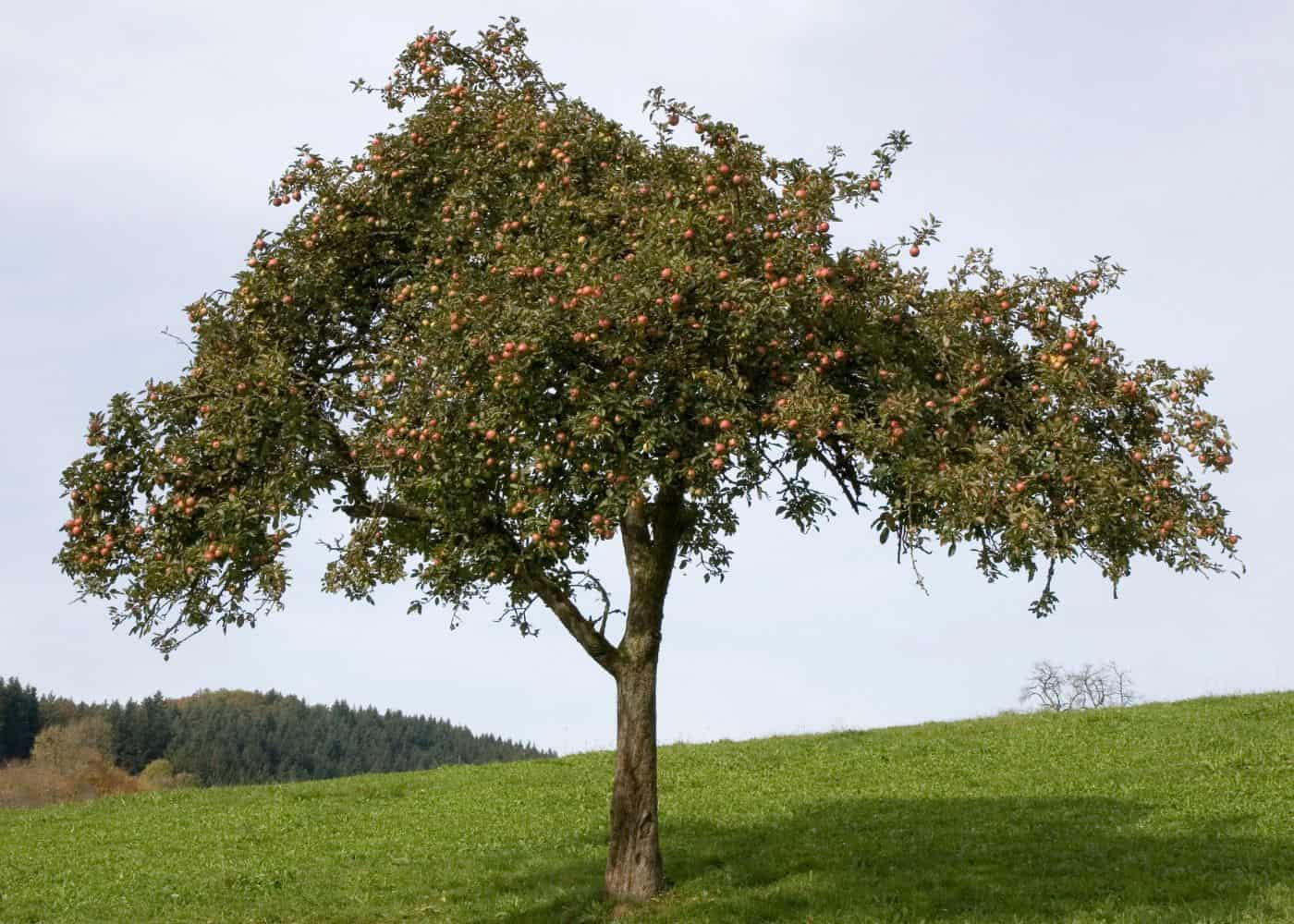
Identifying a tree as an apple tree
Apple trees are small deciduous trees generally reaching a mature height of 6-30 feet tall. Cultivated varieties tend to be shorter and may have a visible graft union near the base of the trunk, while wild apples that grew from seed are more likely to reach 30 feet tall and will not have a visible graft union on the trunk.
Apple trees tend to have oval-shaped dark green leaves and wizened branches (especially on older trees). The tree may also have quite a few suckers growing up from the roots around the base of the trunk.
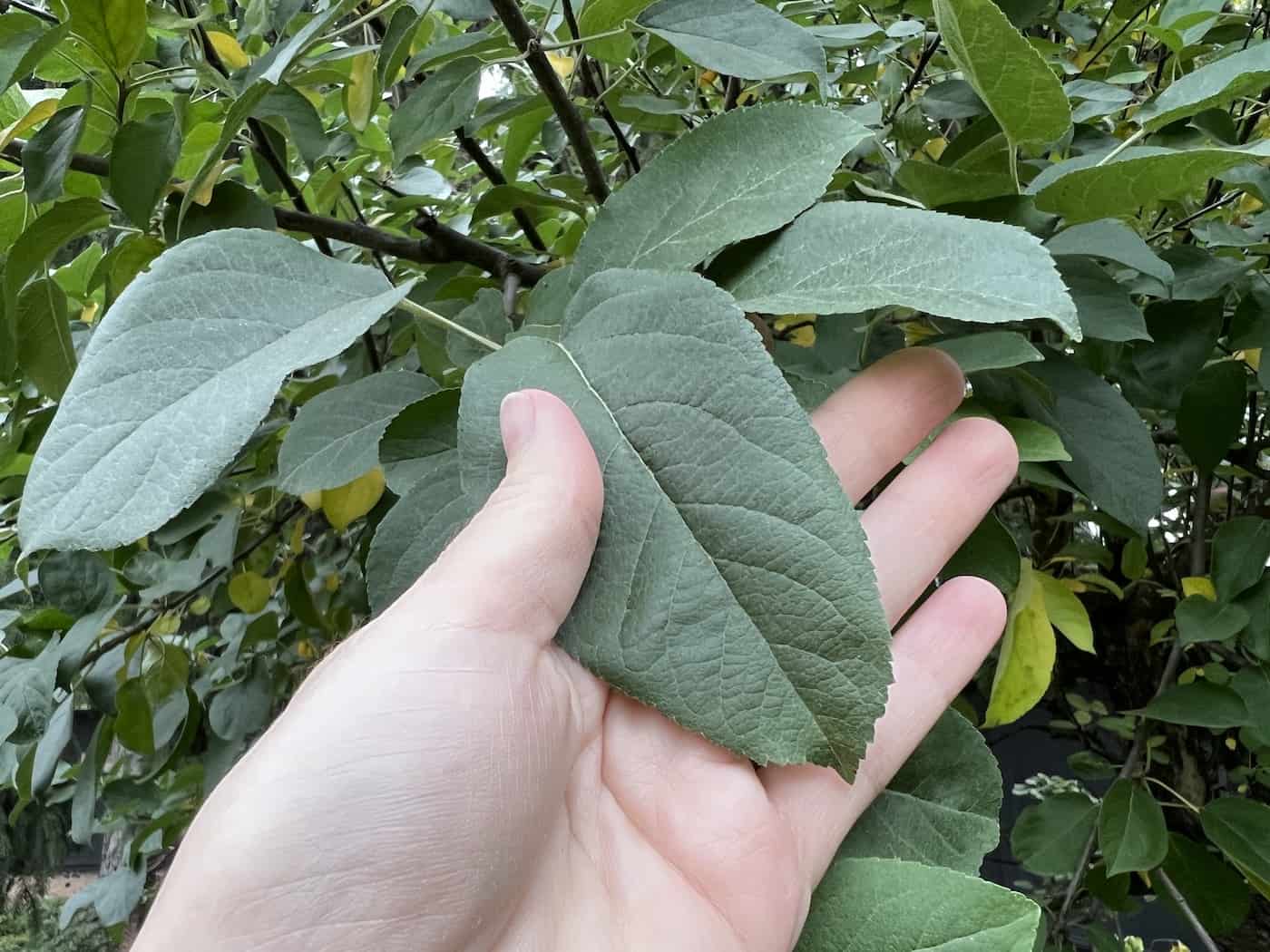
Here are some identifying characteristics of apple trees (Malus domestica):
- Leaves are arranged alternately on the branches.
- Leaves have an ovate shape, a pointed tip, and serrated edges.
- Flower buds are light pink, and blossoms are white with five petals each.
If you’re unsure, you can also use “Visual Lookup” on your iPhone to get more information on the type of tree to see whether or not it’s likely an apple:
- Open the Photos app
- Tap a photo of the tree
- Below the photo, tap the info (“i”) icon (there should be two little stars over it)
- Tap the leaf icon in the photo, or click the “Look Up – Plant” bar below the photo
- Siri will bring up web results of the likely plant and some similar web images
“Apple trees come in all sizes, but once fixed in your mind, it is easy to pick out their silhouettes in the landscape.”
Hardy Apples: Growing Apples in Cold Climates, by Bob Osborne
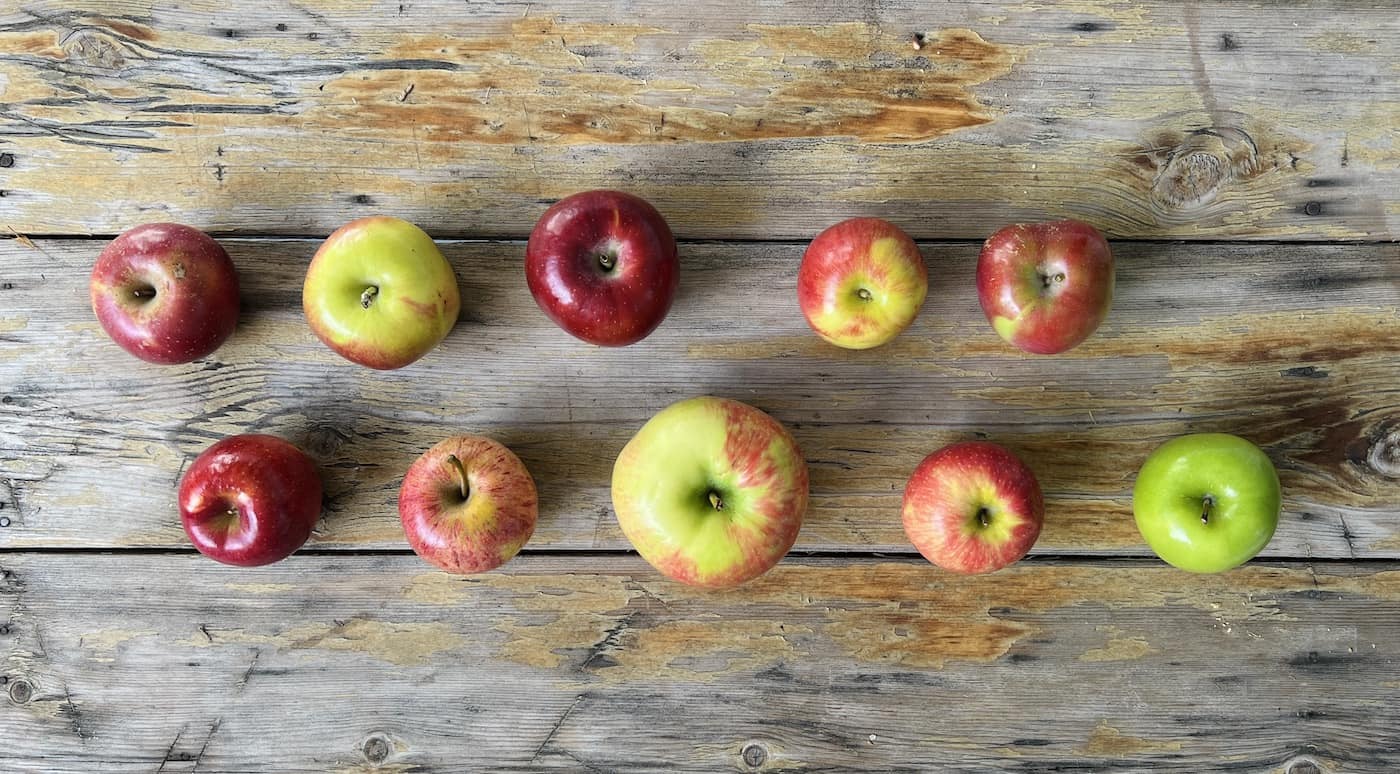
Identifying different varieties of apples
Identifying apple trees by their variety is easiest during apple harvest season while the tree is actively bearing fruit. The height of the tree is not a reliable indicator of the variety as almost all cultivated apple trees have been grafted onto the rootstock of a different variety.
Apples come in many different colors, including shades of yellow, green, pink, red, and brown. The skin of the apple can be smooth or have a rougher texture. Some apples also have stripes or a mottled appearance.
One common identification method is to compare the apples on the tree to be identified with the profiles of known cultivars. You can get profiles of known cultivars online, for instance, at the Apple Catalog of FruitID. There are also quite a few books with detailed variety descriptions, including:
- The Illustrated World Encyclopedia of Apples, by Andrew Mikolajski
- Apples of Uncommon Character, by Rowan Jacobsen
- Apples of North America, by Tom Burford
- Hardy Apples: Growing Apples in Cold Climates, by Bob Osborne
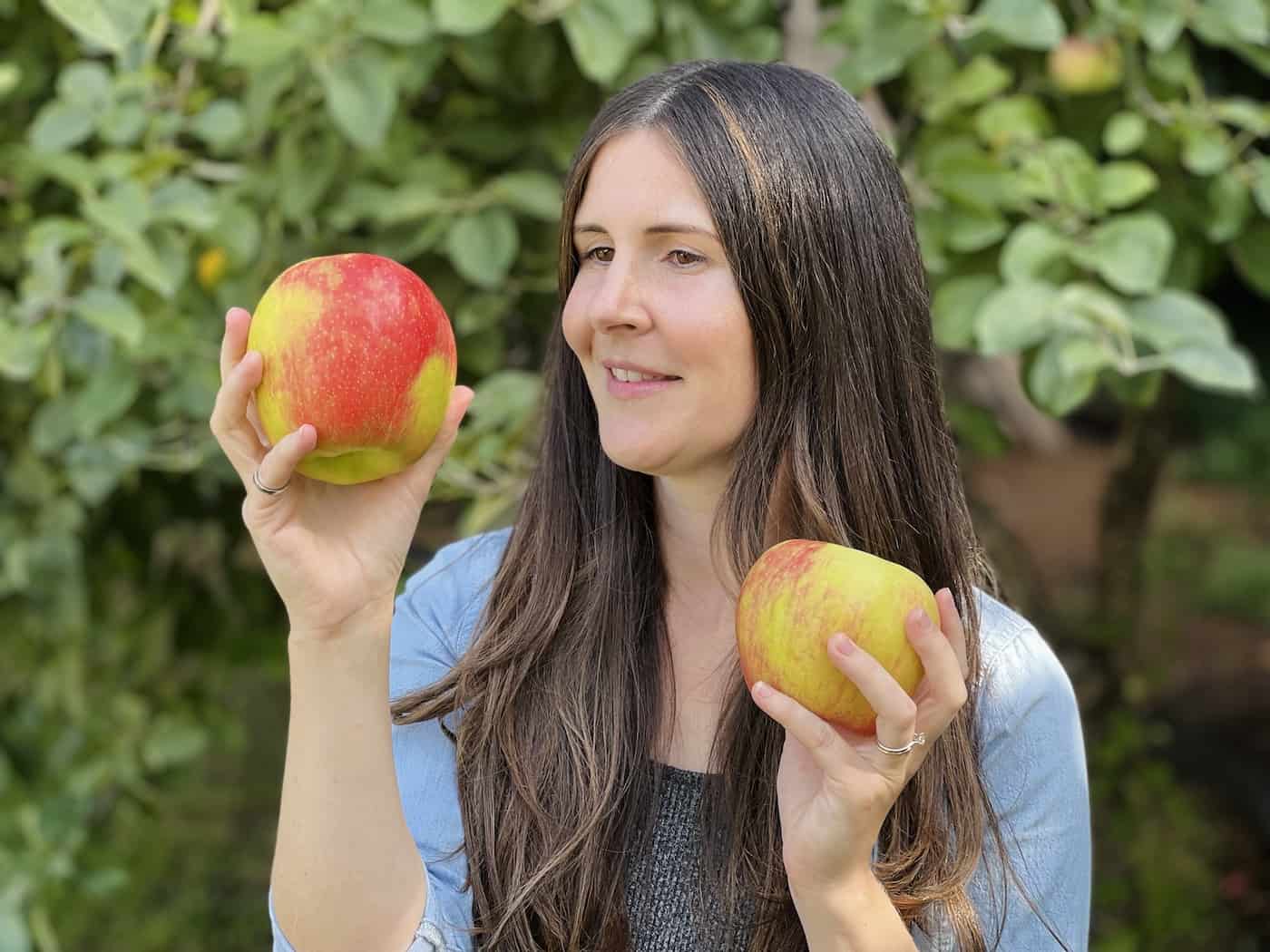
Flowering season
Different varieties flower at different times in the apple blossom season
- Early season flowering (Granny Smith, Cortland, McIntosh, Gravenstein, Idared, Grimes Golden, Belle de Boskoop, Antonovka, Golden Russet)
- Mid-season flowering (Fuji, Golden Delicious, Jonathan, Mutsu, Cox’s Orange Pippin, Bramley’s Seedling, Calville Blanc d’Hiver)
- Late season flowering (Macoun, Winesap, Northern Spy, Rome Beauty, Normandie, Orleans Reinette, Ralls, Tolman Sweet)
Harvest season
- Summer Apples are harvested in late summer, typically at the end of July or in August. These early varieties include Anna, Gravenstein, Lodi, Early Blaze, Paula Red, and Ginger Gold.
- Fall Apples are harvested in September and early October. These mid-season varieties include McIntosh, Honeycrisp, Cortland, Golden Delicious, Ambrosia, Jonagold, Empire, Gala, and Red Delicious.
- Winter Apples are harvested in late October or even November. These late-season varieties include Pink Lady, Fuji, Braeburn, Enterprise, GoldRush, and Wolf River.
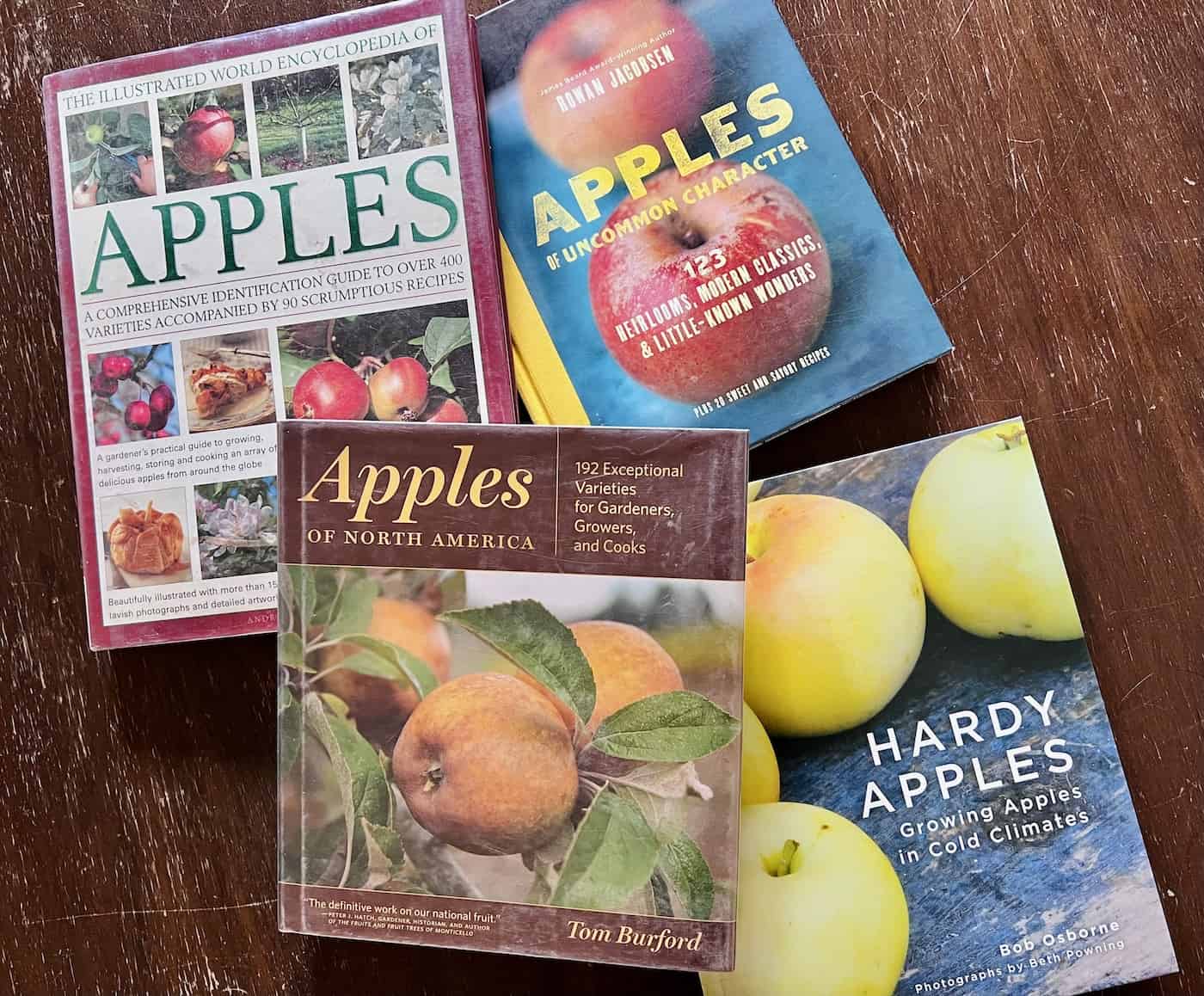
Shape categories of apples
Here are the basic shape categories of apple fruits:
- Round
- Ovate
- Oblate
- Conic
- Oblong
- Oblique
Fruit size
Some apples are bigger than others! Here are some common varieties sorted by expected mature fruit size.
Small apples
- Ashmead’s Kernel Apple
- Fameuse Apple (Snow Apple)
- Frostbite Apple
- Golden Russet Apple
- Keepsake Apple
- Spartan Apple
Medium apples
- Gala Apple
- Ambrosia Apple
- Ben Davis Apple
- Cox’s Orange Pippin Apple
- Empire Apple
- Macoun Apple
- McIntosh Apple
- Golden Delicious Apple
Large apples
- Honeycrisp Apple
- Red Delicious Apple
- Cortland Apple
- Liberty Apple
- Rhode Island Greening Apple
- Northern Spy Apple
- Antonovka Apple
- Hudson’s Golden Gem Apple
Very large apples
- Alexander Apple
- Bramley’s Seedling Apple
- Viking Apple
- Wolf River Apple
Apple peel color
Some apples are one solid color, like green or red, while others are bicolor with streaks or rosy cheeks. Here are some common apple colors:
- Yellow peel (Golden Delicious, Yellow Transparent, Silken, Grimes Golden, Antonovka, Hudson’s Golden Gem)
- Green peel (Granny Smith, Mutsu, Rhode Island Greening, Newtown Pippin, Alfriston, Bassard, Calville Blanc d’Hiver, Carrara Brusca, Pound Sweet)
- Red peel (Red Delicious, Envy, Rome, Empire, Violette)
- Purple peel (Macoun, Arkansas Black, Black Oxford, Pomme Noir, Blue Pearmain, Burgundy,
- Brown russeted peel (Roxbury Russet, Golden Russet) Zabergau Reinette, Malinda, Knobbed Russet)
- Bicolor peel (Fuji, Gala, Pink Lady, Jonathan, McIntosh, Honeycrisp, SweeTango, Jonagold, Ambrosia)
Lenticel appearance
A lenticel is a tiny dot on the peel of the apple that acts as a respiration hole for the fruit. Sometimes lenticels are barely noticeable, but sometimes they are pronounced. Lenticels can be lighter or darker than the peel and can also be raised or even slightly indented when compared to the apple’s skin.
Bloom
The peel of an apple growing on a tree develops a “bloom”, which is a waxy material that covers the peel. The bloom on some varieties is thicker and cloudier than others. The bloom of a ripe apple is easy to rub off to observe the true color of the peel.
Culinary classifications of apples
Apples are usually classified by taste into one or two of the following categories. While all apples can certainly be used for different cooking applications, some are better than others for certain purposes.
- Dessert apple: great for eating fresh and for cutting up into salads (Honeycrisp, Pink Lady, Jazz, Envy, Opal, SweeTango)
- Cooking apple: perfect for applesauce, apple pie filling, and apple crumble (Cortland, Jonathan, Northern Spy, Newtown Pippin, Rhode Island Greening, Roxbury Russet)
- Baking apple: can be baked whole in the oven with the core removed (Idared, Jonathan, Newtown Pippin, Rome Beauty, Wolf River)
- Cider apple: great for making apple juice and apple cider (Empire, Jonathan, Golden Russet, Macoun, Esopus Spitzenberg, Black Oxford, Winesap)
Taking a representative sample of apples
Don’t just choose the first apple off the tree to attempt identification. Wait until the fruit has ripened on the tree, and then choose 3-5 apples that are of average shape, size, and color. These apples should also be healthy and free from damage or defects. You’ll also want to trim off a few small branches of foliage. Once you have your apples, it’s time to get started!
“When collecting apples for identification it is a good idea to pick three to five good specimens to get an average profile of the apple.” Hardy Apples: Growing Apples in Cold Climates, by Bob Osborne
Getting expert help with identification
If you just can’t figure out the variety, you can get help from experts. The easiest way is to ask local orchardists at fruit stands or the local farmers market. You can also visit apple festivals or send samples off to experts to identify. Lastly, it’s even possible (albeit expensive) to get apples DNA tested to have their genetic profile matched with known cultivars.
USA
Expert Identification: National Apple Harvest Festival https://www.appleharvest.com/
DNA Testing: Cornell College of Agriculture and Life Sciences https://cals.cornell.edu/cornell-agritech/products-we-research/tree-fruits
Canada
Expert Identification: Salt Spring Apple Festival https://saltspringapplefestival.org/
DNA Testing: Summerland Research and Development Center https://profils-profiles.science.gc.ca/en/research-centre/summerland-research-and-development-centre
UK
Expert Identification: Brogdale Collections https://brogdalecollections.org/fruit-identification/
DNA Testing: NIAB East Malling Research Station https://www.niab.com/services/niab-labtest-analytical-services


